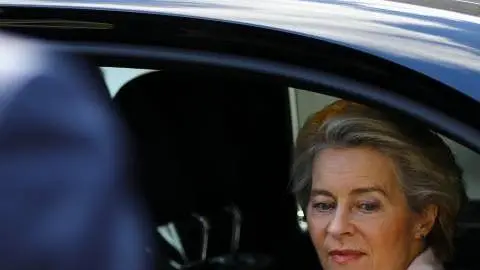Austria: bleak outlook amid political and economic crises
When news comes from Austria, it’s often big. At the turn of the year, Austria’s economic crisis was exacerbated by a political crisis, potentially worsening the economic situation
The upturn that never was
If you had to sum up the state of the Austrian economy in one word, “disillusioning” would be a good choice. Positive growth surprises were repeatedly followed by downward revisions, resulting in an economic loop that has now been ongoing for more than two years. Since the second quarter of 2022, the Austrian economy has, on average, contracted by 0.3% each quarter.
Most recently, the economy shrank by 0.1% quarter-on-quarter in the third quarter of 2024, revised downwards from an initial +0.3%. Unless an economic miracle happened at the end of last year, with the economy having defied gravity like the Wicked Witch of the West, 2024 will have marked the second consecutive year of recession.
The outlook
Economic weakness has hit all sectors, with private consumption yet to recover. Although nominal wages have risen by some 22% in Austria between 4Q 2020 and 3Q 2024, clearly outpacing eurozone wage growth of 15%, various factors have driven an above-average propensity to save and below-average willingness to spend among consumers. Despite strong wage growth, real incomes only returned to their 2020 levels by the end of the third quarter of 2024. Added to this are concerns about a cooling labour market. Looking ahead, the recovery in purchasing power should help private consumption to accelerate somewhat, however, as a result of uncertainty and related precautionary savings, the upturn will be limited.
Industry has been one of the greatest strains on the Austrian economy in recent years and, looking ahead, little is likely to change soon. The European Commission's most recent industry survey revealed that order books are still thinning out by the month, while inventories are now at their highest levels since the Global Financial Crisis. Given the ongoing weakness in industry, it's no surprise that Austrian exports fell by almost 4% year-on-year in the first 10 months of 2024, with exports to the rest of the eurozone recording one of the sharpest declines, at almost -6% YoY. Austrian exports to the US, on the other hand, were higher than a year ago, growing by almost 14% YoY between January and October.
Looking ahead, exports are likely to remain under pressure. The eurozone economy is slowing and prospects of a much tighter trade policy under the Trump administration cast doubts on the future of the US as a reliable destination for Austrian goods.
A political crisis with the potential to further weaken the economic outlook
The persistent economic weakness has already taken its toll on competitiveness over the past two years, with companies' assessment regarding their own competitiveness reaching an all-time low at the end of 2024. Therefore, the question of how to restore competitiveness was a key issue in the run-up to last September's parliamentary elections. Restoring competitiveness requires targeted investments to address structural weaknesses such as the lack of skilled workers and changing trade flows.
DG ECFIN Industry Survey: Competitive Position
(net balance)

However, the three parties involved in coalition talks following the elections, the ÖVP, the SPÖ and the NEOs, were divided on how to finance such investments. While the need for investment is high, Austria faced the risk of an excessive deficit procedure from the EU. At 83.2% of GDP, Austria's debt ratio is already well above the debt ceiling stipulated in the European Stability Pact.
The NEOs favoured spending cuts, while the Social Democrats proposed new taxes. These differences led the NEOs to pull out of coalition talks, and the ÖVP and SPÖ also ended their discussions. Subsequently, Karl Nehammer resigned as ÖVP party leader and Chancellor. What had previously been ruled out now seemed less impossible – the ÖVP announced its willingness to hold coalition talks with the right-wing FPÖ, now tasked with forming a new government. This is the first time in Austrian history that a joint government with the FPÖ as chancellor party is possible and to some extent has made the public finance issue the kingmaker.
Initial progress has been made relatively quickly concerning the budget and the avoidance of an EU excessive deficit procedure. The two parties laid out a savings plan to the EU Commission which temporarily averted the excessive deficit procedure. However, a review is due to follow in April. This savings plan particularly targets the spending side. A total of almost €3.2bn, roughly half of the total savings planned for 2025, is expected to be saved by cutting subsidies, such as the climate bonus, the climate ticket, or financial support for educational leave.
The proposal also includes adjustments to the tax system, and a reform of spending efficiency and the federal ministries should generate a stability contribution. The parties’ respective positions in individual policy areas are now to be defined in further talks. While there are major similarities when it comes to fiscal policy, foreign policy differences remain significant, with the FPÖ's eurosceptic stance and calls to end military support for Ukraine contrasting with the ÖVP's pro-European position. The FPÖ also takes a much more radical stance on migration.
The new government might fail to restore popularity
Without a roadmap back to competitiveness, Austria's economic outlook remains bleak. The second consecutive year of recession will be followed by a phase of consolidation rather than a strong recovery. The prospect of a government on an austerity course led by a right-wing chancellor does not provide much optimism. Investment in a sustainable economy and spending cuts appear contradictory, and Austria risks becoming less attractive for foreign skilled workers, worsening the skills shortage in sectors like hospitality.
The Austrian economy in a nutshell (%YoY)

This publication has been prepared by ING solely for information purposes irrespective of a particular user's means, financial situation or investment objectives. The information does not constitute investment recommendation, and nor is it investment, legal or tax advice or an offer or solicitation to purchase or sell any financial instrument. Read more
Download
Download article
23 January 2025
Eurozone Countries Outlook 2025: Europe’s running out of road This bundle contains 12 Articles